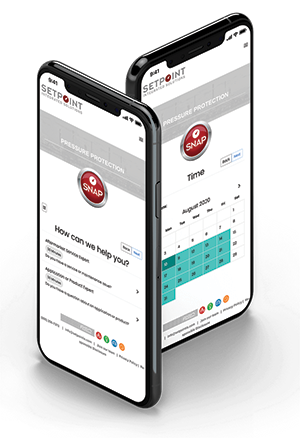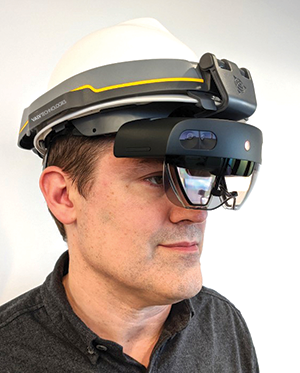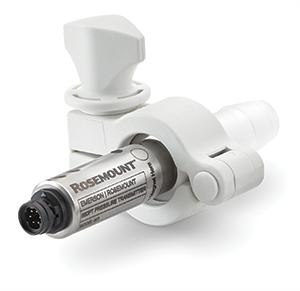FACING THE AGING WATER SYSTEM
One of the most acutely felt challenges in the business of water/wastewater today is the failure of systems and piping, which are aging faster than many municipalities and water authorities can react. At the same time, however, the technology to improve the systems and help managers cope is also improving rapidly.
At the beginning of September this year, Echologics, a Mueller brand, announced a new tool in its arsenal of leak detection and condition assessment products and services: a virtual tool that can predict future failures in piping systems much more accurately than using age-based estimates or models based on prior failures of similar equipment.
PipeRank Virtual Condition Assessment leverages on-site specific historical failure data and identifies factors of a specific pipe network that will likely cause failure. The result gives equipment planners a tool that can help them prioritize according to which pipes will break next. The result is a much more accurate way to predict and model possible failures, better insight into the condition of specific parts of a piping network and a useful tool for making decisions on where capital expenditures should go first.
A model on Echologics’ website shows just how much more accurate this type of virtual tool can be: It compares models based on prior failures of similar pipes, or estimates based on age with what PipeRank can do: the new tool correctly placed 77% of actual pipe failures that occurred in the top 5% of pipe segments likely to fail. That compares to 16% for prior failure models and 44% for age-based models.
The new technology pairs available pipe information from a geographic information system with a proprietary machine learning model to prioritize every pipe segment analyzed by “Likelihood of Failure.” The data that goes into that model includes construction data such as materials used, age of equipment, diameter, presence of a factory or field liner in the equipment as well as environmental factors such as soil, water and satellite data. The system can then produce risk profiles for 1 to 20 years, which helps utilities reduce pipe failures and also to reduce non-revenue water issues (when water is produced but lost before it reaches the customer) and prevent premature pipe renewals/replacements.
Understanding where pipe breaks are most likely to be can help both for long-term planning for replacements and in improving day-to-day operational activities. Specific to valves, utilities have used this technology to target valve turning and replacement programs. Making sure the valves in leak-prone areas are in good working condition ensures that pipe shutdown and repairs can be conducted efficiently with minimal impact to ratepayers.
“During this unprecedented time, a virtual tool that can provide all this with more accuracy can be invaluable to water utilities that need to plan and maintain their water infrastructure service while keeping their workforce safe and well,” said Eric Stacey, general manager of Echologics.
DEVELOPING CRUCIAL PHARMA TOOLS
Automation is being touted as the “unsung hero” in the war against the COVID-19 pandemic because of how it is speeding up the process of bringing a vaccine into reality and presenting new ways to social distance and keep people safe.
Emerson is developing technology and advanced products that can help with those challenges including tools that allow the pharmaceutical manufacturing industry to develop and bring medicines to market faster and a new tool designed to make it easier for workplaces to social distance.
Emerson also released a new equipment tool that is a pressure transmitter (Rosemount 550PT) designed for single-use bioprocessing applications. Single-use instrumentation speeds up the process of developing and making a new medicine by increasing flexibility and scalability. Single-use processes allow manufacturers to address targeted patient populations and reduce time to market.
As far as the social distancing technology, Emerson announced in mid-August that it had enhanced its location awareness technology so that it includes social density management and contact tracing. Location awareness technology provides “relevant-time,” safety-focused monitoring of personnel providing alerts for certain safety factors. Enhanced geofencing in the technology enables manufacturers to design areas that limit the number of personnel in specific locations to promote social distancing. One of the alerts that can be sent out would tell plant managers when the number of people in a given area exceeds predetermined thresholds.
“Worker safety has always been paramount for our customers, but now more than ever, they need tools to help them manage employee exposure risks and navigate new regulatory requirements,” said Bob Karschnia, vice president and general manager of pervasive sensing at Emerson’s Automation Solutions business.
CONNECTING WITH EXPERTISE
Setpoint Integrated Solutions recently released SNAP, an online booking tool that connects customers remotely with its staff experts.
The online booking tool helps to set up virtual meetings between people who need specific information and experts who can provide it via the internet or phone calls.
As Setpoint explains, one of its main customers, the petrochemical industry, relies heavily on a network of contractors and distributors to supply and maintain process facilities. That network is critical in day-to-day operations.
The new Setpoint tool uses the website’s home page to allow people to get the answers they need in just 4 clicks. The initial click is to ascertain whether people need information on pressure protection, control valves, instrumentation & distributed products or isolation valves & automation. The next level asks more specifically which type of expert is needed such as “aftermarket” or “application/product expert” (for instrumentation & distributed production). The next click takes them directly to the team of experts that can help them then allows users to set up meetings via google, a phone call or by getting an expert to contact them in another way.
“This solution addresses an immediate need to improve communication during the pandemic, and is part of a broader, company-wide, drive to deliver a best-in-class customer experience,” says President and CEO Jeff Birch.
ValvTechnologies has found a way to more safely allow people on the job to help customers. The VirtualValv support system, which was announced in early August, is designed to help with remote installations and maintenance services by providing support to any location at any time.
The tool includes innovative software for live remote service assistance allowing certified technicians and on-site staff or customers to interact in real-time using hand gestures and augmented 3D scans. Cell-phone hotspots can be used, and the equipment can record what’s happening.
A recent example of how it works was a project in Malaysia affected by the limit on travel. A service team based in India was originally scheduled to do the work. Instead of going on-site, the new system was sent to the location and programmed with all the necessary procedures for a full electronic relief valve overhaul. The team in India oversaw the repairs remotely to ensure the work was done according to standards.
“During these uncertain times in which social distancing and travel restrictions are being mandated across the globe, it’s imperative that we find alternative means to support our customers to ensure the safety and efficiency of their operations,” said Bill Morris, ValvTechnologies’ International Service Manager. “By utilizing cutting-edge technology, ValvTechnologies and its customers can collaborate on troubleshooting valve maintenance or repairs to avoid costly downtime.”
GENILEE PARENTE is managing editor of VALVE Magazine. Reach her at gparente@vma.org.
RELATED CONTENT
-
Air Valves in Piping Systems
Liquid piping systems are prone to collecting air from incoming fluids, pumps and connections.
-
Differences Between Double Block and Bleed and Double Isolation
There is an important distinction between DBB and DIB, as they often fall under the same category and are used interchangeably within the industry.
-
An Introduction to Axial Flow Check Valves
Check valves are self-actualizing devices that respond to both pressure and flow changes in a piping system.












 Unloading large gate valve.jpg;maxWidth=214)


